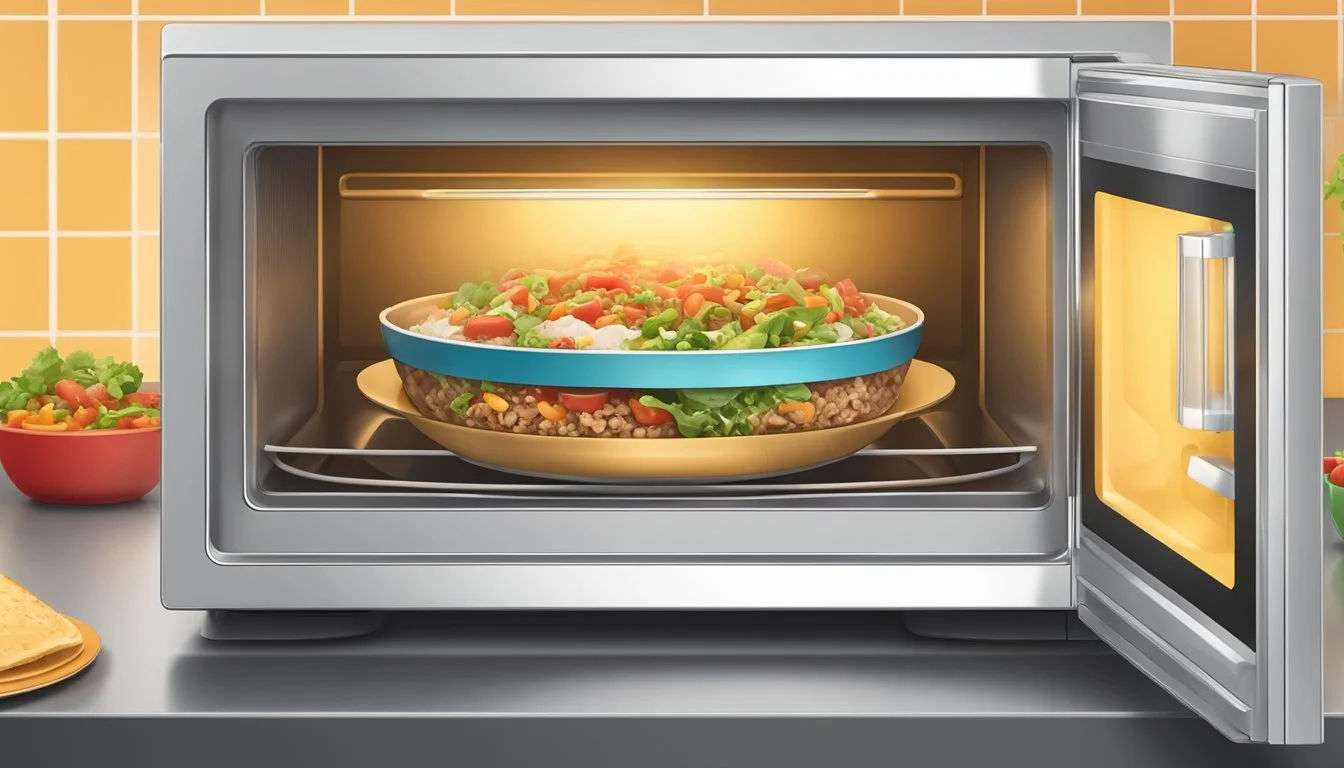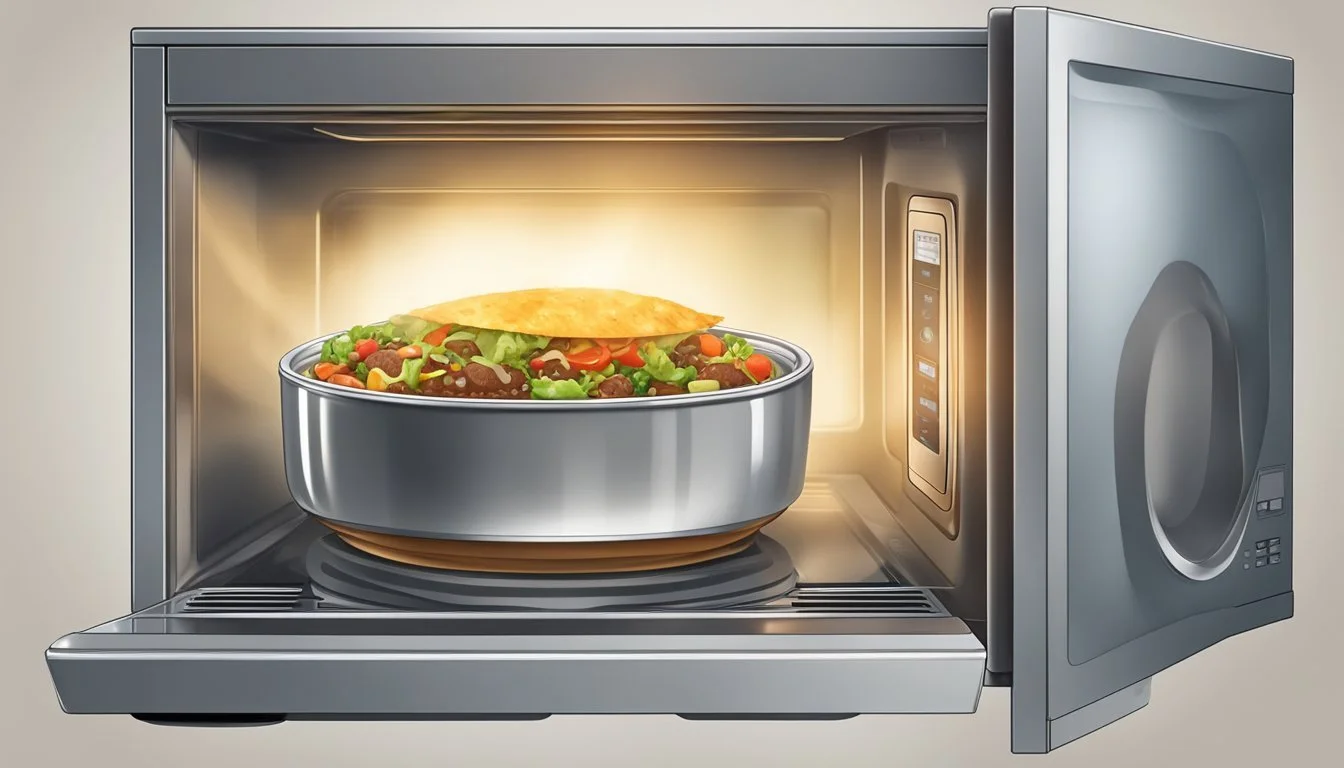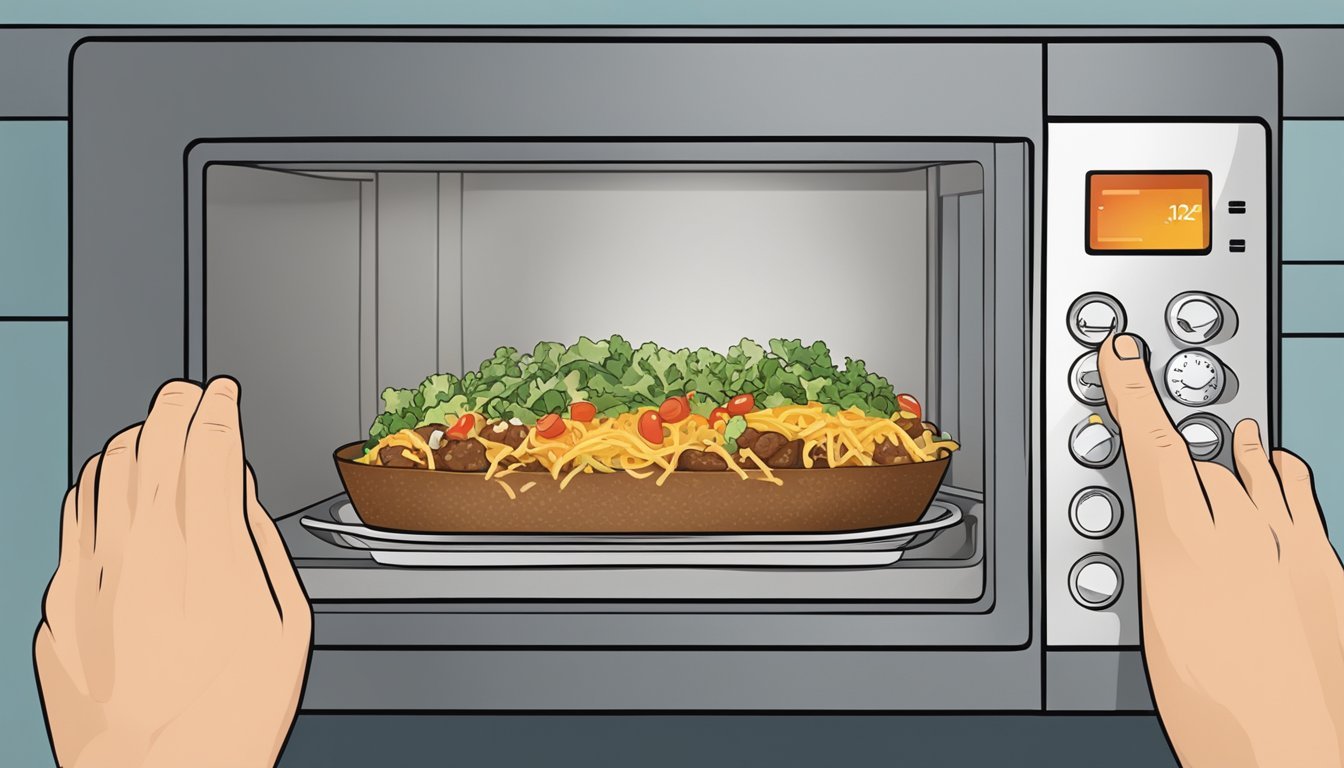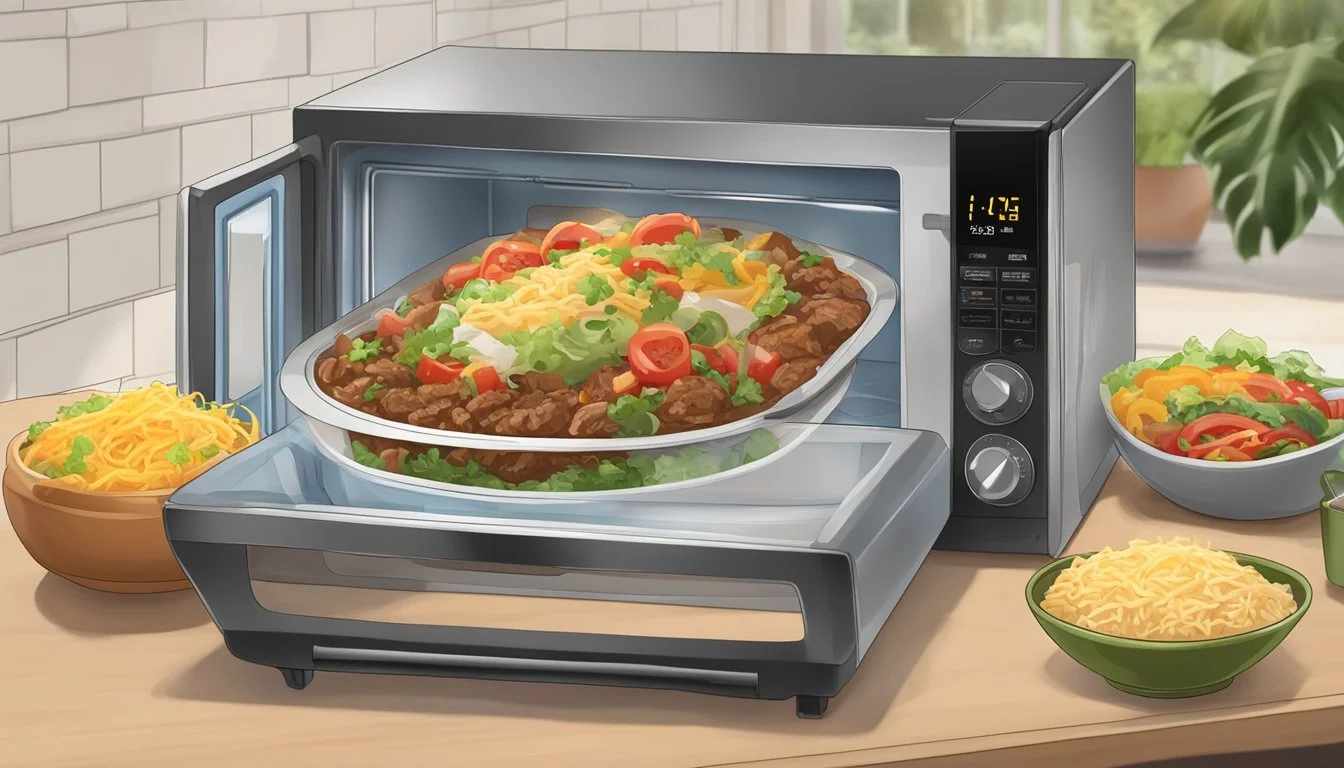How to Reheat Beef Burrito Bowls for Optimal Flavor and Texture
Reheating beef burrito bowls can be tricky, but getting it right ensures you enjoy a meal that is just as delicious as when it was first made. Whether you are dealing with leftovers from a restaurant or a homemade creation, knowing the best methods to reheat can make all the difference.
To reheat beef burrito bowls effectively, use the microwave on medium power with intermittent stirring to ensure even heating without drying out the ingredients. Start with 1-2 minutes and continue in 30-second intervals if needed. Ensuring your burrito bowl is covered also helps retain moisture and flavor.
For those who prefer an alternative method, reheating on the stove is highly recommended. Simply place the burrito bowl contents in a skillet over medium heat, stirring occasionally. This method helps maintain the texture of the beef and other ingredients, providing a freshly-cooked feel with every bite.
Understanding the Basics of Reheating Burritos
Reheating burritos correctly can involve different methods depending on their type and components. Considering the internal temperature is crucial to ensure the food is safe to eat and maintains its quality.
Types of Burritos
Burritos can be broadly classified based on their stuffing and preparation. Traditional burritos usually contain ingredients like beef, beans, cheese, and rice. Breakfast burritos often include eggs, sausage, and potatoes. Frozen burritos, whether store-bought or homemade, require different reheating techniques compared to freshly prepared ones. Each type demands a specific approach to retain its texture and flavor. For instance, frozen burritos should be partially thawed before reheating to achieve a consistent internal temperature without overcooking the tortilla.
Components of a Beef Burrito Bowl
A typical beef burrito bowl consists of layers such as seasoned beef, rice, black beans, corn, salsa, and cheese. The key to a successful reheat lies in treating each component with care to avoid dryness or sogginess. Beef should be reheated evenly to retain its juiciness without becoming rubbery. Rice and beans need moisture during reheating to prevent them from drying out. Adding a splash of water and covering the bowl can help in retaining moisture. Cheese should be melted, not burnt, requiring possibly different timings compared to other ingredients.
Importance of Internal Temperature
Achieving the correct internal temperature is essential for food safety. Beef and other components in a burrito bowl should reach at least 165 degrees Fahrenheit. This ensures any harmful bacteria are eliminated, particularly in leftovers or frozen burritos. Using a meat thermometer can help in accurately checking the temperature of beef and other dense ingredients. Uneven reheating can result in cold spots, making the burrito bowl less enjoyable and potentially unsafe to eat.
Focusing on how these elements interact during the reheating process ensures the burrito maintains its quality and is safe to consume.
Preparing Your Burrito Bowl for Reheating
This section covers the essential steps to handle leftover ingredients, store burrito bowls safely, and segment toppings from base components for optimal reheating.
Handling Leftover Ingredients
Handling leftover ingredients properly is crucial to maintaining their quality. First, remove any sour cream, lettuce, tomatoes, or other fresh toppings that can become soggy or lose their texture when reheated. Use separate containers for these ingredients if possible. Left a note to keep these items in a refrigerator if they are not consumed immediately after being separated. Ensure your beef, rice, and beans are in airtight containers to prevent spoilage.
Safely Storing Burrito Bowls
Proper storage is paramount to avoid foodborne illnesses. Place your burrito bowl components like rice, beans, and beef into airtight containers. Label each container with the date it was stored to keep track of freshness. Refrigerate these containers promptly. If you plan to reheat the burrito bowl in more than four days, consider freezing the ingredients, except for fresh items like lettuce and tomatoes, which do not freeze well.
Segmenting Toppings From Base Components
Segmenting toppings from base components ensures even reheating and maintains texture. Remove sour cream, lettuce, tomatoes, and cheese from the burrito bowl before reheating the core ingredients. Store these separated toppings in small, covered dishes or zip-lock bags. When ready to reheat, focus on the base components like rice, beans, and beef first. Once these are hot, reintroduce the toppings to preserve their freshness and flavor.
By following these specific steps, you ensure that the reheating process enhances the quality and taste of your burrito bowl.
Reheating Methods for Beef Burrito Bowls
There are several effective methods to reheat beef burrito bowls, each with its own benefits. The following methods ensure your leftovers are warmed through and maintain their delicious flavors and textures.
Using the Microwave
To quickly reheat a beef burrito bowl, use the microwave:
Prepare the Bowl: Transfer the beef burrito bowl to a microwave-safe dish. If the bowl already is microwave-safe, you can reheat it directly.
Initial Heating: Place in the microwave and heat on high power for 1-2 minutes, depending on the size and amount of the meal.
Stir: After initial heating, remove the bowl and stir the contents to distribute the heat evenly. This helps avoid cold spots.
Final Heat: Return the dish to the microwave and heat in 30-second intervals until the internal temperature reaches 165°F.
A microwave-safe cover can help retain moisture and create even heating.
Heating Up in the Oven
The oven method takes more time but can yield evenly heated leftovers:
Preheat: Set the oven to 350°F (175°C).
Prepare the Bowl: Transfer the burrito bowl contents into an oven-safe dish or leave it in its oven-safe container. Cover with aluminum foil to retain moisture.
Heating: Place the dish in the oven and heat for 15-20 minutes.
Check Temperature: Use a food thermometer to ensure the internal temperature has reached 165°F.
Using oven mitts for safety when handling the hot dish is recommended.
Skillet Reheating Technique
Using a skillet can give your beef burrito bowl a slightly crispy texture:
Prep the Skillet: Heat a non-stick skillet on medium heat on the stove.
Add Ingredients: Once hot, add the contents of the burrito bowl to the skillet. Spread them out for even heating.
Stir Frequently: Stir the ingredients every minute or so to prevent sticking and ensure even heating.
Heating Duration: This method may take around 5-8 minutes. Ensure the contents are heated through to 165°F.
Utilizing the Toaster Oven
A toaster oven can be a versatile tool for reheating without drying out the food:
Preheat: Set the toaster oven to 350°F.
Prepare the Dish: Transfer the burrito bowl contents to a toaster oven-safe dish. Cover lightly with aluminum foil.
Heat: Place the dish inside the toaster oven and bake for 10-15 minutes.
Check Temperature: Ensure an internal temperature of 165°F before serving.
This method is particularly suited for smaller portions.
Air Fryer Reheating Approach
An air fryer can reheat a beef burrito bowl and add a crispy element to certain components:
Preheat: Heat the air fryer to 325°F.
Prepare the Bowl: Place the burrito bowl mixture in the air fryer basket. Smaller portions work best for even heating.
Reheat: Cook for about 7-10 minutes, shaking the basket halfway through.
Final Check: Ensure the internal temperature reaches 165°F before consuming.
Using this method can enhance the texture with a slight crispiness.
By utilizing these methods, you can reheat beef burrito bowls effectively while maintaining their appealing flavors and textures. Each method has its own unique advantages, making it easy to find the best option for your needs.
Ensuring a Tasty Reheated Burrito Bowl
Achieving the perfect reheated beef burrito bowl involves maintaining the right moisture levels and ensuring the toppings stay fresh. These steps will help preserve the flavor and texture of your meal.
Maintaining Moisture and Preventing Sogginess
To avoid a soggy burrito bowl, begin by reheating the bowl without any toppings. Cover the dish and set the microwave to medium power for 1-2 minutes. Stir halfway through to ensure even heating.
For extra moisture, add a splash of water or broth before reheating. This creates steam, preventing the beef and rice from drying out.
Air fryer method:
Preheat the air fryer to 350°F (175°C).
Place the bowl in the fryer and heat for 5-8 minutes, flipping halfway.
This method helps keep the texture nice and crispy.
Restoring the Freshness of Toppings
Fresh toppings like guacamole, sour cream, and lettuce should be added after reheating to maintain their texture and taste.
Guacamole:
Use a ripe avocado, mash it, and add lime juice, garlic, and seasoning.
Pico de Gallo:
Combine diced tomatoes, onions, cilantro, lime juice, and seasoning.
These ingredients should be cold when added.
If using pre-stored toppings, keep them refrigerated and add them just before serving. This keeps them crisp and flavorful, contributing to a well-balanced reheated burrito bowl.
Post-Reheating Tips
Once your beef burrito bowl is reheated, enhancing its flavor and texture can be achieved by adding fresh ingredients and serving it optimally. These steps will elevate your meal and make it more enjoyable.
Adding Fresh Ingredients
Incorporating fresh ingredients can make a reheated beef burrito bowl taste just like new. Toppings such as guacamole, freshly chopped lettuce, and pico de gallo add vibrant, refreshing flavors. Adding a spoonful of sour cream or a drizzle of lime juice can enhance the richness and acidity.
Consider mixing in cherry tomatoes for a burst of sweetness and juiciness. Sprinkling some hot sauce can provide a spicy kick. Fresh vegetables add a desirable crunch, making the dish feel more lively and satisfying.
Optimal Serving Suggestions
Serving your beef burrito bowl with the right accompaniments can enhance the overall dining experience. Presenting it with warm tortillas on the side allows for creating makeshift tacos. Adding a wedge of lime for squeezing over the top can brighten the flavors significantly.
Pairing the bowl with a fresh side salad can balance out the dish’s richness. If additional protein is desired, topping the bowl with a fried or poached egg can add an extra dimension. Emphasizing temperature contrasts, such as warm beef paired with cool guacamole and sour cream, creates a more complex and enjoyable eating experience.
Nutritional Considerations
When reheating a beef burrito bowl, it is important to be mindful of its nutritional content. Focus on the caloric content and balancing proteins and carbohydrates to ensure a well-rounded meal.
Caloric Content of Reheated Burrito Bowls
Reheated beef burrito bowls can vary in calories depending on the ingredients used. A typical burrito bowl might contain components such as rice, quinoa, beans, beef, vegetables, and cheese.
Brown rice and quinoa are popular base options and contribute differently to the calorie count.
Brown Rice: Approximately 215 calories per cup.
Quinoa: Roughly 222 calories per cup.
Inclusion of black beans and refried beans can add another 120-240 calories per cup, depending on preparation methods. When combined with protein sources like ground beef or chicken, which have around 250-300 calories per serving, the calorie total can accumulate quickly.
Be mindful of toppings like cheese and sour cream, as these can add both flavor and additional calories. For those monitoring their caloric intake, using smaller portions or low-calorie alternatives can help.
Balancing Proteins and Carbohydrates
Balancing proteins and carbohydrates in a beef burrito bowl is essential for a nutritious meal.
Ground beef or chicken provides substantial protein, essential for muscle repair and growth. A serving of ground beef can offer around 24 grams of protein.
Beans, such as black beans or refried beans, are not just a source of fiber but also add to the protein content. A cup of black beans contains about 15 grams of protein.
Pairing these with complex carbohydrates like brown rice or quinoa ensures sustained energy release.
Incorporating an array of vegetables like bell peppers, corn, and tomatoes introduces essential vitamins and minerals, promoting overall health. These additions also contribute a mix of fiber, aiding digestion, which is pivotal for full meal satisfaction.
By carefully selecting and moderating the ingredients, one can enjoy a balanced and fulfilling beef burrito bowl without compromising on nutritional value.
Additional Insights and Recommendations
Beef burrito bowls offer versatility not only in their preparation but also in how they can be reinvented for subsequent meals. They also come with considerations regarding food safety to minimize waste.
Creative Ways to Repurpose Leftovers
Leftovers from a beef burrito bowl can easily transform into new, delicious meals. For breakfast, consider making breakfast burritos. Simply wrap the beef, rice, beans, and veggies in a flour tortilla, adding scrambled eggs and avocado for extra flavor.
Another option is to use the leftovers as filling for wraps or sandwiches. The beef and vegetables blend well with coconut oil-grilled tortillas for a quick lunchtime solution.
For a fresh twist, repurpose the components into a taco salad. Layer the beef, beans, and rice over lettuce, and top with salsa and cheese. Using leftovers in diverse ways can keep meals interesting and minimize waste.
Safe Handling and Avoiding Food Waste
Proper handling of beef burrito bowl leftovers is crucial to prevent spoilage and foodborne illnesses. Store leftovers in airtight containers and refrigerate within two hours of cooking.
When reheating burritos, ensure even heating at a safe temperature. Use an oven or microwave, checking that the internal temperature reaches at least 165°F. Use steaming techniques to retain moisture, particularly with rice and meat.
By following safe storage and reheating practices, leftovers can be enjoyed without risk. This reduces food waste, making your meals more sustainable while maximizing the value of your ingredients.






